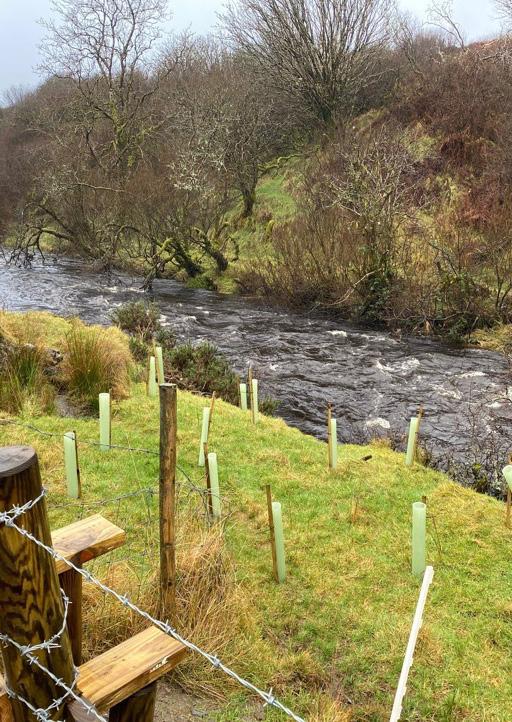

Introduction
In 2022 Loughs Agency published its first Strategic Plan for Fisheries and Angling Improvement for the Foyle and Carlingford Areas. This strategy document was the result of extensive consultation with the angling clubs and federations who represent all disciplines of angling within these catchments. The feedback from this consultation guided the development of the Strategic Plan and allowed the Agency to ensure that cognisance was taken of the major issues raised by its stakeholders.
Angling clubs are the driving force behind the management of fisheries on the ground within these catchments and they will play an enormously important role in delivering growth of the sport of angling and in the conservation and development of fisheries going forward. The National Governing Bodies of the sport also have a key role to play in ensuring the clubs are supported to develop their governance, coaching programmes and funding for projects. Private fisheries can also play a part in the development of the sport at a grassroots level as well as being instrumental in the improvement of the tourism potential of angling.
Communication has been flagged throughout the consultation phase for the Strategic Plan as a major issue that needs to be addressed between the Agency and its stakeholders, many of whom feel disenfranchised by the manner of the management decision-making taking place at present.
A major issue that was repeated during the consultation for the Strategic Review process by many clubs and federations was the reducing fish stocks and the links to poor water quality and pollution. The enhancement and conservation of fish stocks will be a priority for the Agency going forward and this action plan will set out the steps necessary to achieve this.
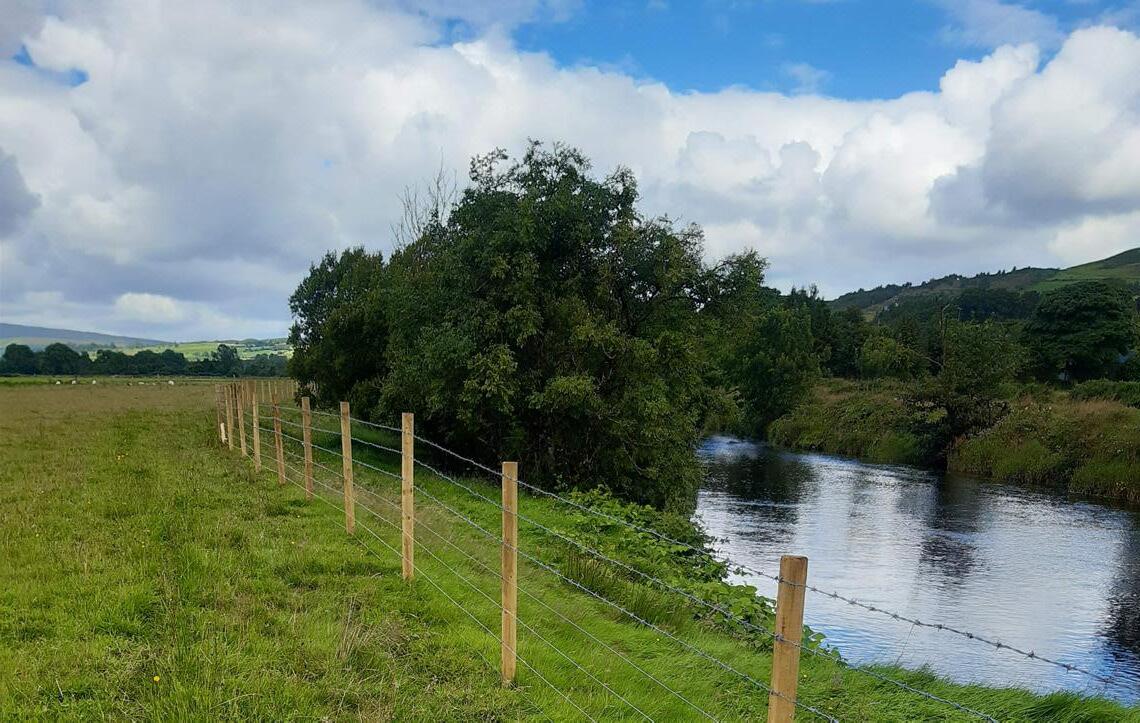
Strategic Context
The way ahead will be founded on the key pillars of Knowledge, Stewardship and Sustainability in everything that we do. Recognising the wealth of knowledge held by our staff but also by our stakeholders will be key to bringing about the changes needed. The development of a sense of ownership will help to bring about lasting change in our fisheries and develop local champions who can sustain interventions into the future.
The four key strategic themes that have been developed in the Strategic Plan are:
Sound Evidence Base Communications & Partnerships
Maximising Potential Successful Delivery
These high level strategic themes will help to guide the delivery of fisheries and angling development in Foyle and Carlingford over this planning period. These themes are aspirational and will take a conscious concerted effort across the board within the Agency to deliver.
The Current Situation
Citizen Science/Community Engagement by Angling Clubs
Many angling clubs are now actively engaged with citizen science programmes in an effort to understand their river catchments better and to ensure they have the ability to monitor the health of the ecosystem and mitigate against any risks. Only 30% of the clubs that responded to the 2021 online questionnaire take part in citizen science programmes such as Riverfly monitoring, water quality monitoring, invasive species monitoring and pollution reporting. This type of work helps to empower angling club members and develops a sense of ownership.
There was almost unanimous interest in engaging with citizen science programmes from the clubs that responded which could suggest that they need more information, connections and training on the current programmes that are available. Some programmes such as Riverfly monitoring have costs associated with them to get off the ground and this may be a limiting factor for some clubs. The need for funding to allow clubs to engage more with citizen science initiatives should be investigated.
A higher proportion of clubs had previously been involved with community engagement projects such as litter picks and outreach events. Several clubs have mentioned that litter is an issue for them and they take part in coordinated litter initiatives such as “live here love here”, “fit for a king” and “big spring clean”. There are only a small number of clubs who are actively involved in outreach work such as holding workshops along their rivers and getting involved in nature education in their catchments. This is an area that could help to attract new audiences for angling clubs and encourage growth of club memberships, especially from a youth angling perspective. Angling club members have a very good understanding of their catchments and in many cases are the custodians of their rivers and are in a good position to pass this knowledge on to others in an effort to help preserve these ecosystems.
Involvement of Angling Clubs in Fisheries Development
Just over half of all the clubs that responded to the 2021 consultation had taken part in some type of fishery enhancement project in the past. Bank protection works were the most common form of fishery enhancement works undertaken by the clubs followed by fencing and planting of riparian areas and the building of groynes/deflectors. Instream habitat works and the placement of spawning gravel were the least common types of development works. No clubs appeared to engage in any natural water retention or flood alleviation measures. Funding was a mixture of in-house and external for these projects.
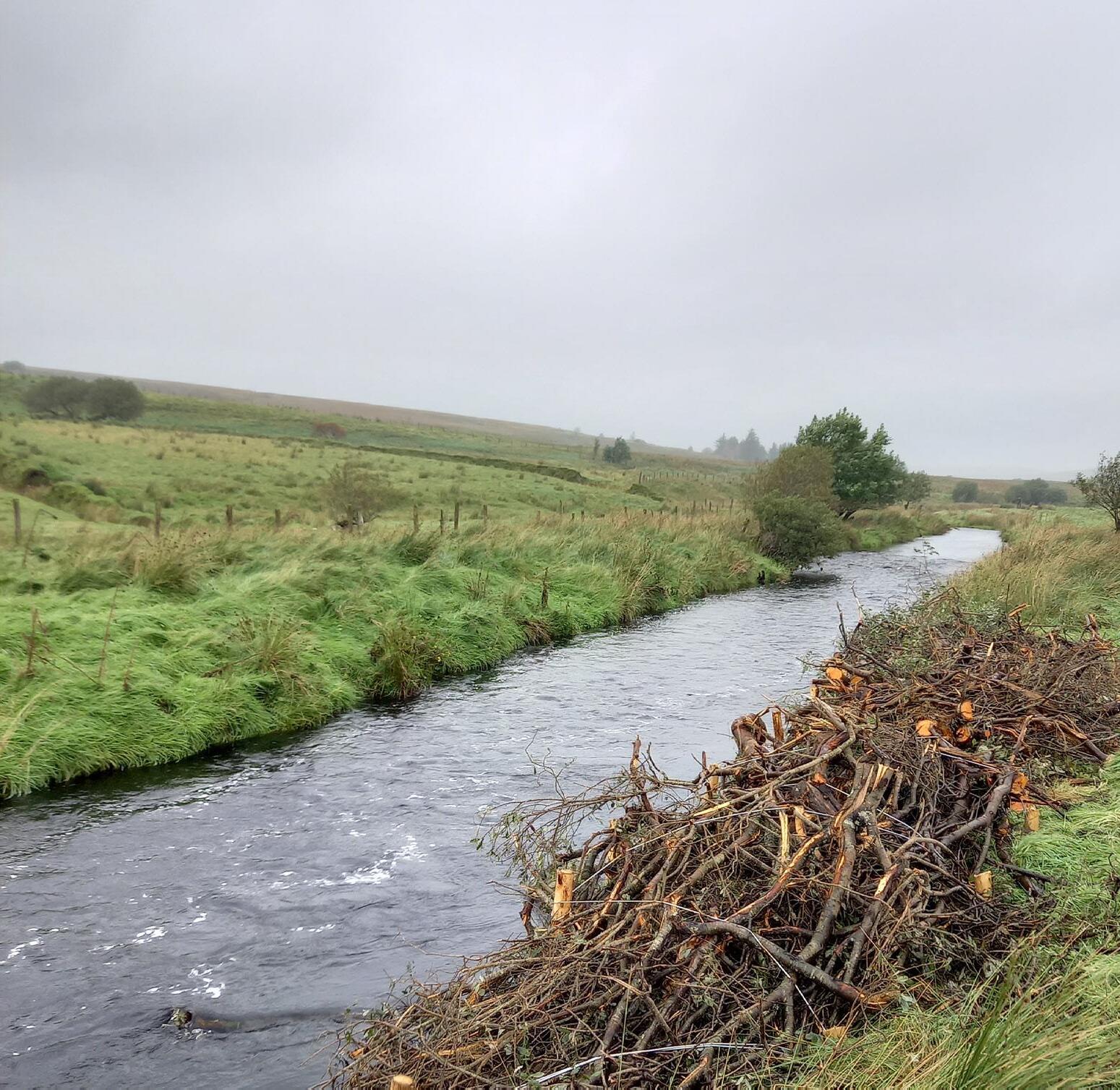
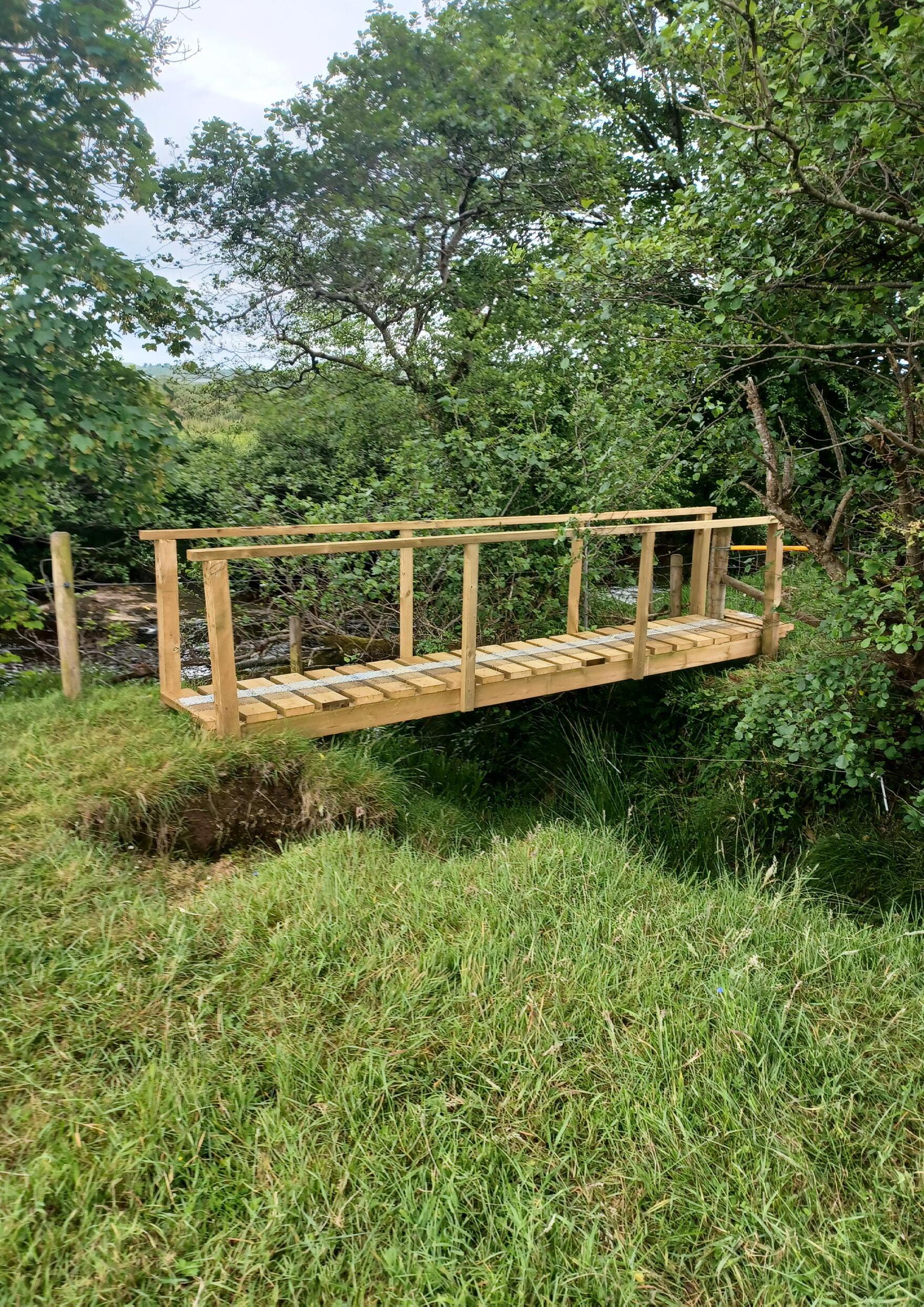
Funding Needs of Angling Clubs
Less than half of the clubs responding to the 2021 online questionnaire applied for funding on a regular basis and the vast majority did not feel confident that they are aware of the funding streams available to them. Almost all who took part in the questionnaire would like support in identifying funding streams and developing applications. The fact that the angling clubs do need help in this regard is critical to continuing to grow these clubs. Training and workshops on funding applications are available from many local development groups, sports bodies and volunteer support organisations. A guide to what funding is available and how to qualify could be developed as part of a toolkit for angling clubs to better equip them for the future.
Partnership Working by Angling Clubs
A small number of angling clubs have links to other groups and have been involved in partnership working with them. Local community development groups, River’s Trusts, the Woodland Trust and Men’s Sheds were all included in previous partnership working.
Implementing the Action Plan
Implementation of this Action Plan will take a significant effort and will require excellent communication and a partnership approach with many groups and organisations in our catchments. This partnership working will help the Agency to promote its identity as the competent authority for fisheries within Foyle and Carlingford and will lead to new opportunities for collaboration and access to untapped funding streams.
The successful delivery of these actions can only be achieved with the appropriate resources and funding and many will require extensive preparatory work and relationship building before they can be achieved. An important element of this action plan will be to ensure that the Agency has identified the appropriate staffing structure and resources needed to deliver these actions in the long term. The need for a specific unit within the Agency to manage and deliver on these actions has already been identified in the Strategic Plan.
Fisheries Development
Action Timeframe
Short (S) Medium (M) Long (L)
Secure the angling licence monies to deliver an annual Fisheries Improvement Fund for Foyle and Carlingford
Draft site selection criteria for fisheries improvement projects
Ensure all projects have pre and post works monitoring carried out to measure their impact
Identify sources of fish stock for potential augmentation and disaster recovery scenarios and sign MOUs with any authority removing coarse fish from salmonid fisheries that may be available for restocking elsewhere
Draft fishery and angling development plans for all LA permit waters
(S)
Outcome Monitoring Metric Partners
More investment in fisheries improvement projects
Annual Fisheries Improvement Fund operating
(S)
(S)
(M)
Coherent and consistent approach to fisheries improvement
Coherent and consistent approach to fisheries improvement
Maximising productive fisheries opportunities
Annual Fisheries Development Reports
Annual Post Project Evaluations
DAERA/DECC
(M)
Maximising production and promoting the angling resources
Number of MOUs signed per annum
Number of plans produced, reported on annually
DAERA/IFI
Promote the involvement of local clubs in the feasibility
scoping and delivery of fishery improvement projects
Follow a catchmentbased approach to fisheries improvement ensuring a coherent network of multi-annual projects
Maximise the use of citizen scientists in fisheries improvement projects
Ensure all fisheries development projects are included in the LA GIS database in detail
Adopt a crossdirectorate approach to delivery of fisheries improvement projects in Foyle and Carlingford
Set up and resource a fisheries improvement unit within LA to prioritise projects and take the lead on project feasibility scoping, management, delivery and post project evaluation
(S)
(S)
Better working relationships with stakeholders and knowledge transfer
Number of projects with stakeholder involvement, reported annually
Coherent and consistent approach to fisheries improvement
(M)
(S)
(S)
Better working relationships with stakeholders and knowledge transfer
Better information available for management and improvement planning
Coherent and consistent approach to fisheries improvement
Number of catchmentbased multiannual projects, reported annually
Angling clubs, NGBs
(M)
Coherent and consistent approach to fisheries improvement
Number of citizen scientists involved, reported annually
GIS database layers, reported annually
DAERA, IFI, LAWPRO, NIEA, OPW, rivers trusts, local councils
Angling clubs, NGBs, general public
Crossdirectorate project delivery teams, reported annually
Fisheries Improvement Unit formation
Foster a culture of openness and transparency in fisheries improvement works
Ensure timely flow of information to the public on fisheries improvement projects
Use angling clubs and other groups to deliver lasting changes to fisheries through community involvement in fisheries improvement projects
Ensure quality control of fisheries improvement projects are conducted by the Science Team within LA
Ensure there are opportunities for LA staff to conduct CPD in fisheries improvement
Conduct awareness raising about fisheries improvement projects with angling clubs and federations
(S)
Better working relationships with stakeholders
(S)
Feedback from angling clubs in biannual surveys
Better public awareness of LA projects
Press releases, reported annually
Angling clubs, NGBs
(M)
More resilient communities and angling clubs
Number of projects with community involvement, reported annually
Communications advisors
(S)
Evidence-based development and high quality, measureable outputs.
(M)
(S)
Continuous improvement of our services to the public
Post-project evaluations, reported annually
DAERA, IFI, LAWPRO, NIEA, OPW, rivers, trusts, local councils
Better working relationships and knowledge transfer
Number of staff CPD courses held, reported annually
Feedback in the biannual angling club survey
Promote the involvement of angling stakeholders in the development of large scale fisheries improvement funding applications at an early stage where appropriate
(M)
Better working relationships and knowledge transfer
Feedback in the biannual angling club survey
DAERA, IFI, LAWPRO, NIEA, OPW
Habitat Improvement
Action Timeframe
Short (S) Medium (M) Long (L)
Promote buffer strips and fencing off banks to protect fisheries from erosion due to livestock grazing
Promote the addition of spawning gravels where needed to increase spawning habitat capacity
Advocate for riparian tree planting to help control nutrient run off, capture carbon and help limit river water temperatures
(S)
Outcome Monitoring Metric Partners
Increased bank stability, vegetation richness and protection of fisheries
(S)
Increased spawning habitats
Length of buffer strip created and fencing installed along waterways, reported annually
Area of new spawning gravels created, reported annually
DAERA, IFI, LAWPRO, NIEA, OPW, rivers, trusts, local councils
(S)
Increased shade, reduced water temperature, carbon capture and reduction in nutrient run off
Number of new trees planted, reported annually
DAERA, IFI, LAWPRO, NIEA, OPW, rivers, trusts, local councils
DAERA, IFI, LAWPRO, NIEA, OPW, rivers, trusts, local councils
Adopt nature-based approaches to habitat improvement to maximise fisheries productivity
Advocate for the addition of large woody debris to watercourses to promote instream productivity
Remove barriers to migration, where possible, to ensure maximum available use of all suitable
(S)
(S)
(M)
Increased longevity of habitat improvement schemes and restoration of natural aquatic processes
Increased invertebrate life and fisheries productivity
% of projects using naturalbased approaches, reported annually
Quantity of large woody debris installed, reported annually
Increased migration escapement to spawning beds and removal of bottlenecks to the sediment
Number of barriers removed and quantity of new fish habitat opened up reported annually,
Angling clubs, private fisheries
DAERA, IFI, LAWPRO, NIEA, OPW
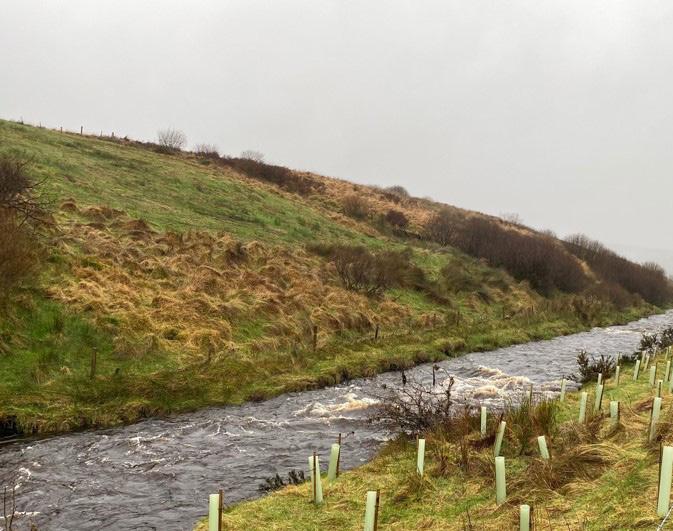
Action Timeframe
Short (S) Medium (M)
Ensure invasive species control plans are in place for all fisheries improvement projects (S)
Promote the biosecurity messaging by national partners (S)
Encourage (S)
Long (L)
Biosecurity
Outcome Monitoring Metric Partners
Reduced risk of invasive species spread
More awareness about the invasive species issue
Reduced risk of invasive species spread, better informed management
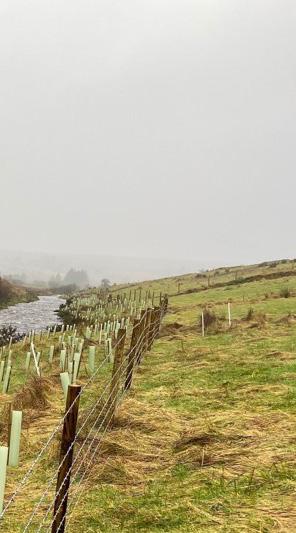
Post project evaluations, reported annually
DAERA, IFI, LAWPRO, NIEA, OPW, rivers, trusts, local councils
Press releases, social media posts, reported annually
Online reporting tool available for anglers, reported annually
DAERA, IFI, LAWPRO, NIEA, OPW, rivers, trusts, local councils
Angling clubs
DAERA Department of Agriculture, Environment and Rural Affairs
DECC Department of Environment, Climate and Communications
IFI Inland Fisheries Ireland
LAWPRO Local Authority Water Programme
NIEA Northern Ireland Environment Agency
OPW Office of Public Works
NGB National Governing Body
LA Loughs Agency
